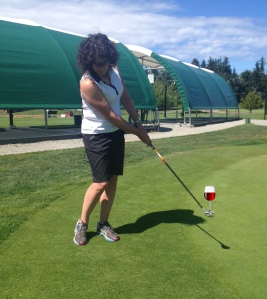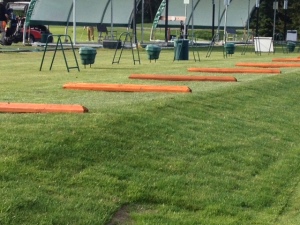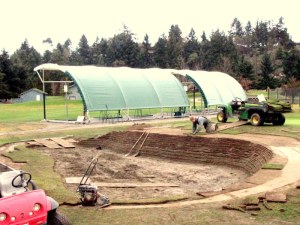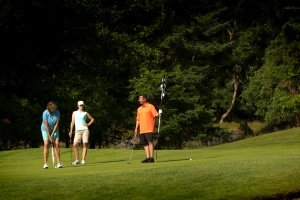Improving chip shots requires a few basic adjustments to your body and stance, and with the help of a golf instructor and a little practice, you can perfect your chipping. 
- Put your hands lower on the grip and your feet closer to the ball.
- Your ball position is best two inches behind the middle of your stance. Stand close enough to the ball so that when you raise the heel of your club, the toe is down.
- Use an accelerating swing by making a follow-through about 20 percent longer than your back swing and using a rhythmic, smooth and steady swing.
- Keep your wrists firm.
- Put more weight on your front foot (left for right handed golfers) and keep your hands in front of the club face.
- At the end of your swing you should be able to hold a glass of wine on your clubface.
Don’t be overwhelmed – chipping takes practice and if you hit the greens on a regular basis you should see improvements over time. If not, you may want to set up a lesson to find out how you can improve your stance and swing.
Hélène Delisle, PGA of Canada Professional
Fairwinds Golf Club



